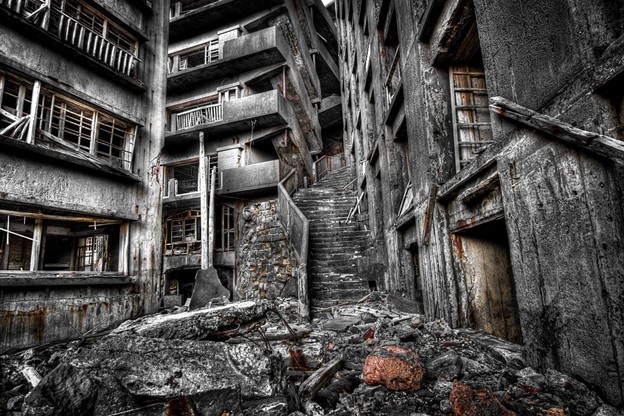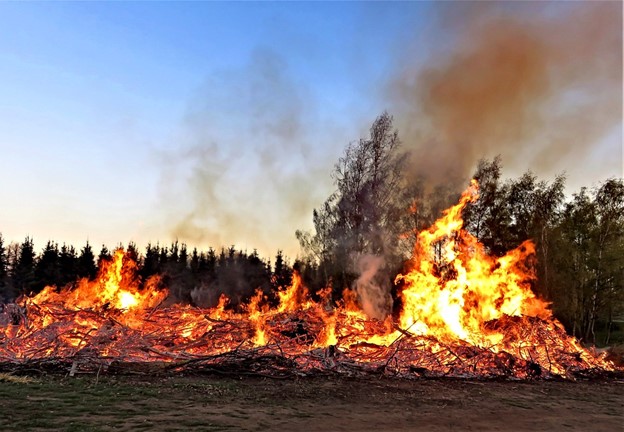“Time is the fire in which we burn.”- Delmore Schwartz
A resin and rosin manufacturer in Brunswick, Georgia reignited in the afternoon on April 15th after catching fire that morning. Sources cite changing winds as a possible reason for reignition, a natural occurrence out of human control. Tornados, hurricanes, and earthquakes are consistently on the 24-hour news cycle. Natural events always hold the fascination of the public, as they affect daily lives and routines. Unlike their exciting counterparts, however, there are also shifts that occur gradually, which can lead to large problems down the road. In safety, both sudden and gradual changes should be considered, and the questions need to be answered to find the proper remedies or safeguards to keep a plant safe.
We Didn’t Start the Fire
The reignition of the fire in Georgia is a large-scale version of a common event that anyone who has been trained in fire safety is familiar with. When a campfire is running out of fuel, the common practice is having a fire watch (the individual maintaining the fire) dowse the fire with water and then wait until all embers have cooled before moving them to a safe disposal location where no combustibles are nearby. The specifics of the practice vary, but the reason is the same: to prevent the reignition of the fire in an uncontrolled manner. If a fire is left to its own, it can unintentionally cause a blaze and lead to an event as large as a forest fire. Now a fire the size of the one in Brunswick is large and would be difficult to treat in the same way, so containing the blaze becomes the better practice. A reignition of a fire is one of many various changes to a plant’s surroundings that reduce the efficacy of existing safety practices. There are ways to capture and review this and other potential scenarios in the Safety Lifecycle.

Photo Credit: JordyMeow via Pixabay
Location, Location, Location
Before the construction of a new plant begins and while it is in the midst of commissioning, one of the steps performed by a safety team is Facility Siting, specifically required in OSHA’s Process Safety Management (PSM) Standard (CFR 1910.119(e)(3)(v)). The methods of addressing this requirement can vary from including an item to discuss siting in every node in a Hazard and Operability Study (HazOp) or an additional checklist included at the end of the Hazard review. The initial analysis is where this section usually gets the most attention, which is not surprising. The team is most likely aware of the potential hazards regarding the location of the equipment in relation to its surroundings during the construction phase of the plant. It is when revalidations come along 5 years later that these concerns are not at the forefront of the review team. The team is likely to change over that period, and so are the process and the plant’s surroundings.
Erosion and Minor Flooding
Those who live in areas where mudslides and flash flooding are common are familiar with their effects, but similar, smaller-scale consequences can accumulate over time. Heavy downpours and rapidly changing temperatures can change where the ground is settled. These shifts can lead to potholes and water main breaks, inconveniencing road users everywhere. Chemical plants are not immune to this damage.
Chemical plants have mitigation specifically for excess rain in areas where it is a common occurrence; in many cases, the rainwater is carried away safely to a storm reservoir or drain, so there is no cross-contamination with hazardous waste and the fresh water available to wildlife and used by a municipality for potable water. The elements can wear down the dikes or berms used for containment, so unless they are already included in a plant’s preventive maintenance program, leaks can occur that would lessen the efficacy of mitigation.
Preventative Maintenance
The Mechanical Integrity section of the PSM Standard (1910.119(j)(4)(ii)) requires that “[i]nspection and testing must be performed on process equipment, using procedures that follow recognized and generally accepted good engineering practices.” Plants are to apply this subsection to their process equipment, but it is not required for items like utilities and the safeguards themselves. In some cases, deterioration of mitigation safeguards may be captured only during a compliance audit by a third party or by an exceptionally trained operator during rounds.
Process vs People
Outside of weather-related changes that cause changes to the surroundings, people can change the outlook of a plant’s facility siting. Individuals like to have reasonable commutes, so as to maximize time for life outside of work. This preference does not exclude chemical plants. In recent years it is increasingly common to see a residential subdivision right down the street of a chemical manufacturer. If those communities were constructed after commissioning, they will need to be considered in new facility studies, as it is likely that the severity of any hazards affecting them has not been considered previously.
Slow Changes and Fast Responses
The surroundings and environment of a plant are not static. Nature and humans alike shift as pressures and desires change. When it comes to Process Safety, these changes need to be considered to ensure the corresponding hazards are considered and protected against. This may mean including the rainwater berms, lagoons, and dikes in your Preventative Maintenance system. Or developing a facility siting item checklist to be used during turnarounds or at intervals by operators. It could involve developing a site-specific checklist to use during PHAs.
Including questions and checklist items that remind the team about possible changes to the environment and community can ensure that any changes have the opportunity to be considered. Consideration of potential facility and community hazards may reduce or eliminate the hazards created by incremental changes in the process and the environment. No need for a second wind to reignite was lurking beneath.
